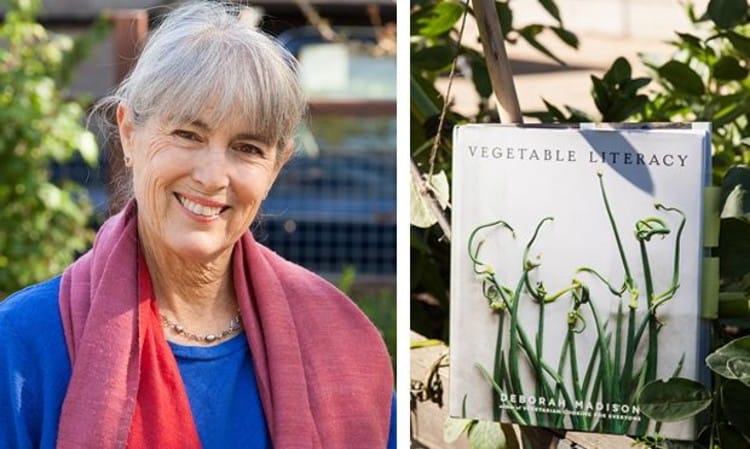Deborah Madison bridges the gap between garden, kitchen, and scientific classroom with her new book, Vegetable Literacy. Far from the average cookbook, this publication is an anthology of insights into the vegetable kingdom.
The book is divided into chapters that each feature a different plant family, including “The Carrot Family: Some Basic Kitchen Vegetables and a Passel of Herbs,” “The Cabbage Family: The Sometimes Difficult Crucifers,” and “The Curcurbit Family: The Sensual Squashes, Melons, and Gourds;” the book covers the mundane to the exotic in the vegetable world. Each chapter includes plant family facts, types of plants and herbs that belong to the family, how the reader can tell they are part of that particular family, how to pair them with other plants, and a short compilation of recipes.
For example, the chapter on the sunflower family describes the edible plants that fall within the Asteraceae or Compositae family, which is also home to many common flowers such as daisies, chrysanthemums, and, of course, sunflowers. The plants within this family include common vegetables like lettuces and artichokes, and herbs such as tarragon and chamomile. Nature, according to Madison, has already given plants that fall within the same family complementary flavors. Using this fact, Madison describes how to use the knowledge of plant families to bring innovative new combinations into cooking. She explains that by using knowledge of the each plant family, cooks can pair a vegetable from one family with an herb from that same family such as she does in the recipe for “Braised Baby Artichokes with Tarragon Mayonnaise.”
In addition to recipes and pairing techniques, Madison illustrates how to take a plant from the garden to the kitchen, with tips like watching out for thorns, and identifying different plants based on types of leaves, flowers, and stems. Packed with photos of plants in the garden, in the kitchen, and used in recipes, the book also provides a visual reference for the reader to better comprehend each plant family and their nuances. The cookbook is unique not in the facts that it presents about plants and food, but that it combines the two subjects to create a tool for finding new culinary combinations both in every day and gourmet cuisine.
In Deborah Madison’s Vegetable Literacy, the secret to fine cuisine lies not in a new technology or method of cooking but in the very plants that food comes from.













